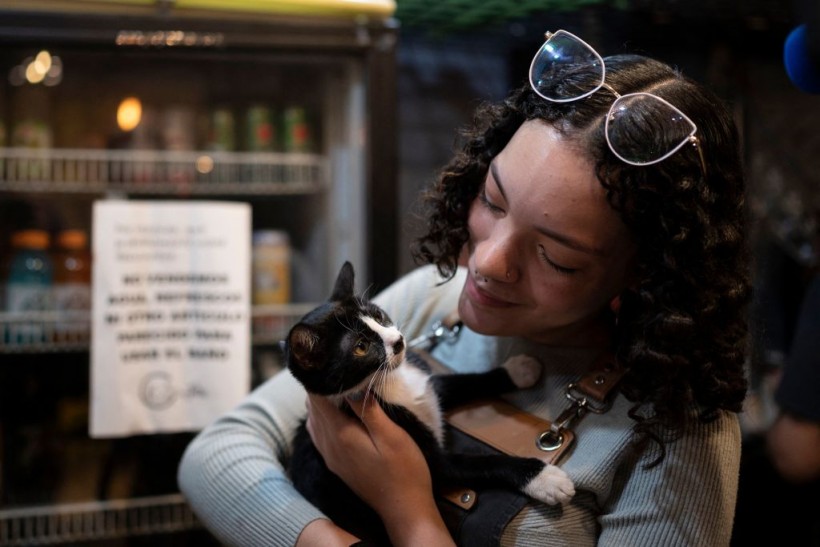Cats, unlike dogs, are harder to decipher with their heart-warming "meows" and other gestures.
These apparent misunderstandings have prompted humans to talk to their feline friends or fur babies even if evidence show that cats do not understand our language, except for certain words like their names and other recurring verbal cues.
For years, some pet owners and experts have attempted to decipher this.
Now, scientists in a previous study confirmed that people can communicate with their cats by just narrowing one's eye and blinking very slowly, claiming this is equivalent from a human interaction into a cat interaction.
The study is only one of the many research that showed that there are multiple ways to understand and reciprocate the verbal and body gestures of cats.
Cat Eye Narrowing Movements

The said study was published in the journal Scientific Reports in October 2020, wherein researchers from the United Kingdom focused around the topic of the role of cat eye narrowing movements during cat-human communication.
The authors started their abstract with the notion that domestic animals are sensitive to human cues that enable inter-specific communication, including emotional cues.
The 2020 research suggested that the eyes are important when it comes to signaling emotions, since the act of eye narrowing itself reportedly appears to be linked with positive emotional communication with a range of species.
With this, the study explored about the widely reported cat behavior involving eye narrowing, referred to as the slow blink sequence.
Also Read: Researchers Determine the 'Right Way' to Stroke a Cat
Slow Blink Sequence
Slow blink sequences normally involve a series of half-blinks, which will be followed by either a prolonged eye narrow or eye closure.
The study's research team from the University of Sussex has found through an experiment that cats' half-blinks and eye narrowing occurred more frequently as a response to the human owners' slow blink stimuli towards them.
The first experiment on cat-human-interaction is counter-measured by comparing the scenario to no owner-cat interaction.
Meanwhile, a second experiment involved a human providing slow blink stimulus, which prompts a higher chance for cats to approach the experimenter during a slow brink interaction compared to a neutral expression interaction.
With this, the team asserted that slow blink sequences can function as a form of positive emotional communication between domestic cats and humans.
Psychologist Karen McComb from the University of Sussex stated that the findings about the fact that cats and humans can communicate in such a way is great, speaking as who both studied animal behavior and a cat owner, as cited by Science Alert.
The Scientific Reports paper primarily pertained to household cats rather than wild cats and their cousins like tiger, lions, and panthers, where it is still unclear if the said findings also apply.
Responding to Names
In 2019, the Smithsonian Magazine cited a separate yet related study published in the same journal, determining that cats can recognize their own names based on sampling 78 kittens that researchers from the University of Tokyo used.
Specifically, the 2019 study found that cats can recognize their human owners' voices, especially if the latter calls their pets' names even if combined with a set of random words.
Related Article: How to Decode Cat Expressions According to Scientists
© 2024 NatureWorldNews.com All rights reserved. Do not reproduce without permission.

![Climate Change is Reducing Dust Levels Worldwide as Arctic Temperature Warms [Study]](https://1471793142.rsc.cdn77.org/data/thumbs/full/70320/280/157/50/40/climate-change-is-reducing-dust-levels-worldwide-as-arctic-temperature-warms-study.jpg)
![Tsunami Hazard Zones: New US Map Shows Places at Risk of Flooding and Tsunamis Amid Rising Sea Levels [NOAA]](https://1471793142.rsc.cdn77.org/data/thumbs/full/70325/280/157/50/40/tsunami-hazard-zones-new-us-map-shows-places-at-risk-of-flooding-and-tsunamis-amid-rising-sea-levels-noaa.jpg)


